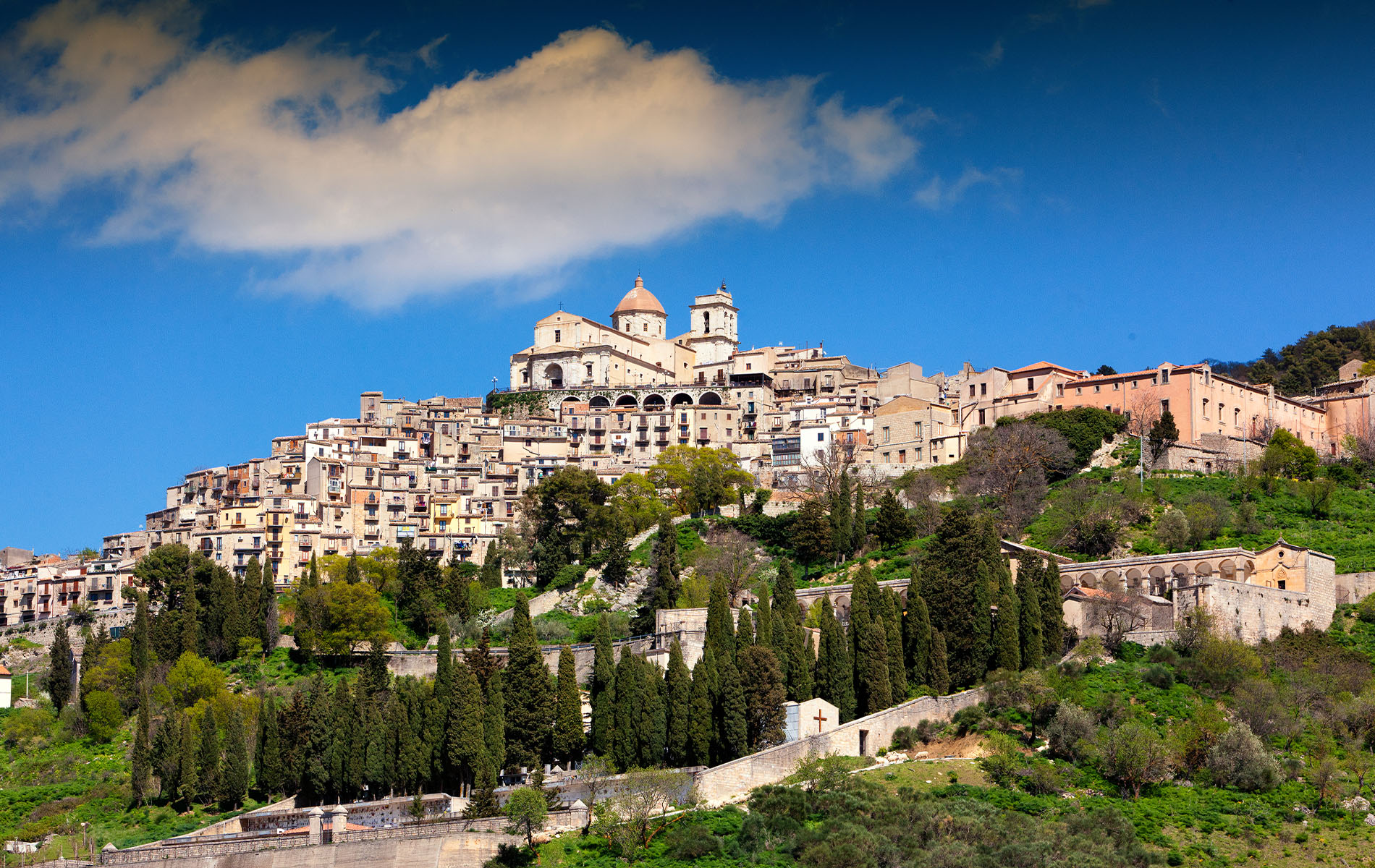Petralia Sottana is part of the Orange Flag circuit, as a village of excellence for the quality of its hospitality, and shares with Petralia Soprana the rule of the Ventimiglia family. The two villages, although born from a single community, were divided for centuries by the dispute over which of the two was the oldest, based on a bell-tower rivalry, which has now been overcome.
Rich in historical evidence, it is therefore a destination for tourists interested in the subject, but not only. In fact, a short distance away is the hamlet of Piano Battaglia, which attracts a very high number of tourists, nature and winter sports lovers.
The Mother Church of Petralia Sottana is dedicated to Maria SS Assunta, behind which we find a panoramic terrace that allows us to observe the valley. It was built as early as the 9th century, but the only element remaining from the past is the 14th-century secondary portal. The church has a 17th-century white stone bell tower with a pointed arch, which, with the dome, are the symbols of Petralia Sottana.
The basilica-plan church has three naves, and inside there are many splendid Baroque stuccoes and the oldest of the Madonie organs, dating back to 1659. Among the works inside are some sculptures by Gagini, the statue of the patron saint, San Calogero, made by Frate Umile da Petralia, and a rich treasure, including Baroque gold and silverware.
Petralia Sottana also has two sanctuaries; the first one, dedicated to the Madonna dall’Alta, stands at 821 metres (a.s.l.) and has been the destination of many pilgrimages since the Middle Ages. It houses the miraculous statue of the Virgin Mary, a masterpiece by Domenico Gagini from 1471. The Madonna dall’Alto became the patron saint of Petralia Sottana when a strong earthquake in 1818 left the town and its people unharmed.
The second one, the Sanctuary of the Lord of Bilici can be reached through a path that offers a view of the surrounding landscape. It was built in 1871 on the site of a castle, elements of which can still be seen. In the sanctuary, which is a destination for many pilgrims, especially during the first days of May, the Crucifix by Fra Innocenzo da Petralia is exhibited. It was donated in 1638 to Duchess Maria Fernanda Alvarez by the monks of the Convent of Friars Minor of Petralia. The crucifix is made of polychrome wood, life-size and represents Christ in the act of addressing God the Father, before taking his last breath.
The town Museum is named after Antonio Collisani, the man who discovered the Grotta del Vecchiuzzo, and is divided into two areas. The archaeological area houses the Collisani collection, which includes numerous ceramic artefacts from the Palaeolithic and Neolithic periods. The geological area has several rooms: the rock gallery, in which it is possible to observe various sedimentary rocks, all formed in a marine environment; the interactive room, devoted entirely to children and their thirst for discovery; and the Salgem room, dedicated to the Petralia Soprana mine in the Raffo locality, and in which it is possible to conduct experiments using salt.
Petralia Sottana is the ideal destination for adults and children alike, who want to have fun among the rooms of the Civic Museum and among the slopes of Piano Battaglia, but also to discover the history of one of the most beautiful villages in the Madonie.




